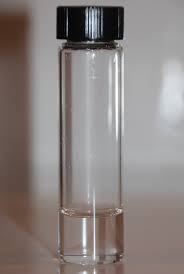Hydrazine-Hazard and Toxicity
Description
Hydrazine is a strong reducing agent and a flammable liquid and vapour. Hydrazine is a useful building block in organic synthesis of pharmaceuticals and pesticides. There are many kinds of hydrazine compounds, including hydrazine, 1,1-dimethylhydrazine, and 1,2-dimethylhydrazine. Small amounts of hydrazine occur naturally in plants. Most hydrazines are manufactured for use as rocket propellants and fuels, boiler water treatments, chemical reactants, medicines, and in cancer research. Hydrazines are highly reactive and easily catch fire.

Toxicity Data
LD50 oral (rat) 60 mg/kg
LD50 skin (rabbit) 91 mg/kg
LC50 inhal (rat) 570 ppm (744 mg/m3; 4 h)
PEL (OSHA) 1 ppm (1.3 mg/m3)—skin
TLV-TWA (ACGIH) 0.1 ppm (0.13 mg/m3)—skin-suspected; human carcinogen
(proposed) 0.01 ppm (0.013 mg/m3)
Major Hazards
Possible human carcinogen (OSHA "select carcinogen"); corrosive to eyes, skin, and mucous membranes; highly flammable and reactive. Hydrazine is extremely destructive to the tissues of the mucous membranes and upper respiratory tract, eyes, and skin. Skin contact with the liquid can result in severe burns; hydrazine is readily absorbed through the skin, leading to systemic effects, which may include damage to the liver, kidney, nervous system, and red blood cells. Hydrazine vapor is irritating to the nose, throat, and respiratory tract, and inhalation of high concentrations may be fatal as a result of spasm, inflammation, chemical pneumonitis, and pulmonary edema. Symptoms of exposure may include a burning sensation, coughing, wheezing, laryngitis, shortness of breath, headache, nausea, and vomiting.
Hydrazine vapor is extremely irritating to the eyes and can cause temporary blindness. Eye contact with the liquid can result in severe burns and permanent damage. Hydrazine is not considered to have adequate warning properties. Hydrazine is listed by IARC in Group 2B "possible human carcinogen" and is classified as a "select carcinogen" according to the criteria of the OSHA Laboratory Standard.Chronic exposure to subacute levels of hydrazine can cause lethargy, vomiting, tremors, itching and burning of the eyes and skin, conjunctivitis, and contact dermatitis.
Toxicity
Hydrazine is extremely destructive to the tissues of the mucous membranes and upper respiratory tract, eyes, and skin. Skin contact with the liquid can result in severe burns; hydrazine is readily absorbed through the skin, leading to systemic effects, which may include damage to the liver, kidney, nervous system, and red blood cells.
Hydrazine vapor is irritating to the nose, throat, and respiratory tract, and inhalation of high concentrations may be fatal as a result of spasm, inflammation, chemical pneumonitis, and pulmonary edema. Symptoms of exposure may include a burning sensation, coughing, wheezing, laryngitis, shortness of breath, headache, nausea, and vomiting. Hydrazine vapor is extremely irritating to the eyes and can cause temporary blindness. Eye contact with the liquid can result in severe burns and permanent damage.
Hydrazine is not considered to have adequate warning properties. Hydrazine is listed by IARC in Group 2B "possible human carcinogen" and is classified as a "select carcinogen" according to the criteria of the OSHA Laboratory Standard. Chronic exposure to subacute levels of hydrazine can cause lethargy, vomiting, tremors, itching and burning of the eyes and skin, conjunctivitis, and contact dermatitis. Hydrazine has been found to exhibit reproductive and developmental toxicity in animal tests.
Flammability and Explosibility
Hydrazine is a flammable liquid (NFPA rating = 3) over a very broad range of vapor concentrations (4.7 to 100%). Hydrazine may undergo autoxidation and ignite spontaneously when brought in contact with porous substances such as rusty surfaces, earth, wood, or cloth. Fires should be extinguished with water spray, carbon dioxide, or dry chemical extinguishers.
Reactivity and Incompatibility
Hydrazine is a highly reactive reducing agent that forms shock-sensitive, explosive mixtures with many compounds. It explodes on contact with barium oxide, calcium oxide, chromate salts, and many other substances. On contact with metal catalysts (platinum black, Raney nickel, etc.), hydrazine decomposes to ammonia, hydrogen, and nitrogen gases, which may ignite or explode.
Storage and Handling
In particular, work with hydrazine should be conducted in a fume hood to prevent exposure by inhalation, and splash goggles and impermeable gloves should be worn at all times to prevent eye and skin contact. Hydrazine should be used only in areas free of ignition sources. Hydrazine should be stored under nitrogen in containers placed in secondary containers in areas separate from oxidizers and acids.
Accidents
In the event of skin contact, immediately wash with soap and water and remove contaminated clothing. In case of eye contact, promptly wash with copious amounts of water for 15 min (lifting upper and lower lids occasionally) and obtain medical attention. If hydrazine is ingested, obtain medical attention immediately.
If significant quantities of this compound are inhaled, move the person to fresh air and seek medical attention at once. In the event of a spill, remove all ignition sources, soak up the hydrazine with a spill pillow or absorbent material, place in an appropriate container, and dispose of properly. Evacuation and cleanup using respiratory protection may be necessary in the event of a large spill or release in a confined area.
Disposal
Excess hydrazine and waste material containing this substance should be placed in an appropriate container, clearly labeled, and handled according to your institution's waste disposal guidelines.


